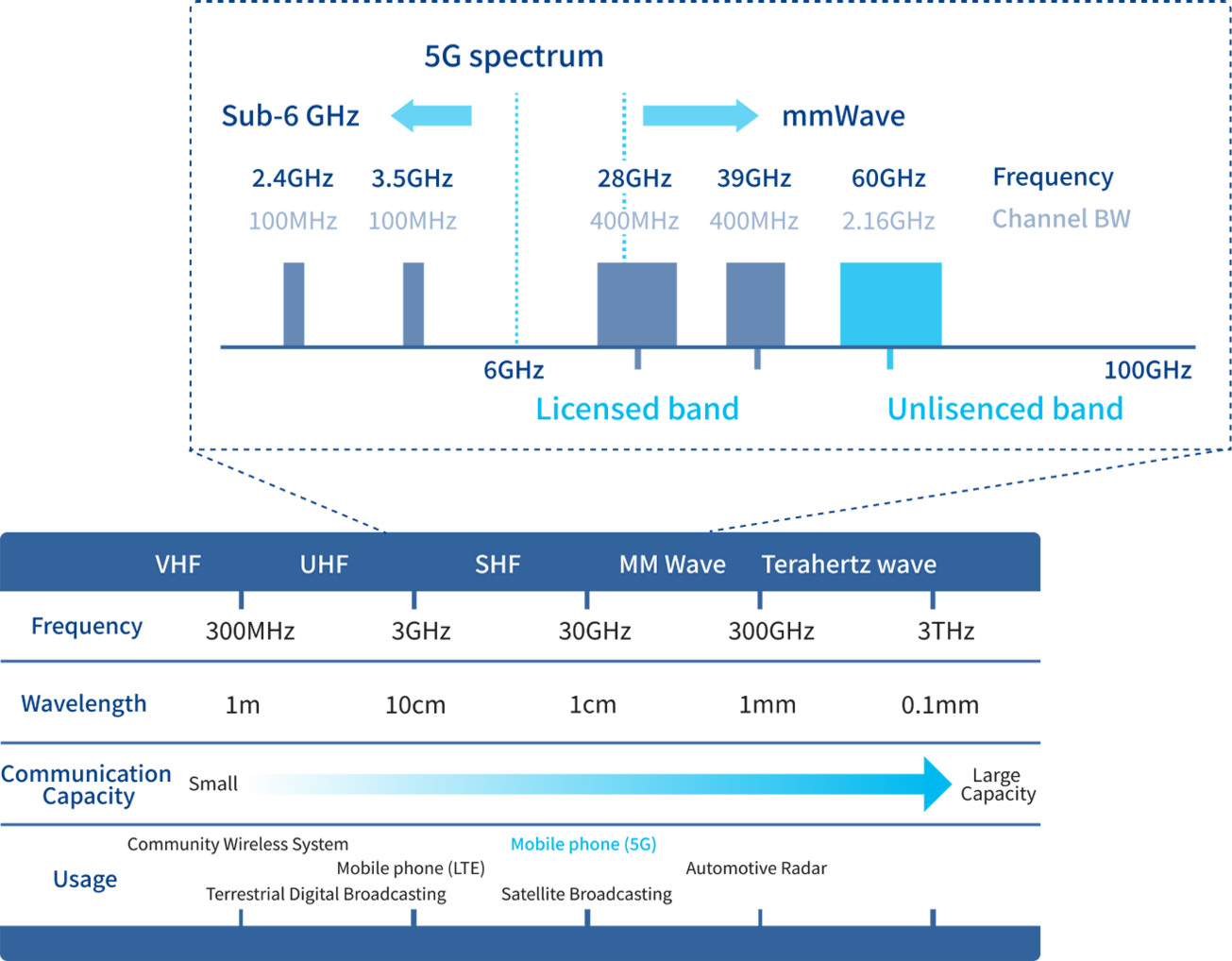Technology Areas/Product Groups
Millimeter waves use frequencies more than 10 times those of conventional microwave bands, and can provide a much wider bandwidth than microwaves. The broadband enables high-speed, large-capacity communications, high-resolution radar, sensors, and more. On the other hand, millimeter waves have the disadvantage that they are more easily blocked by obstacles than microwaves and do not reach long distances, but on the other hand, they have the advantage of being highly confidential and less prone to unwanted interference.
The fifth generation mobile communication system (5G), one of the most typical applications of millimeter waves, uses a high-gain antenna (phased array antenna) that concentrates radio waves into a sharp beam and radiates them strongly in a specific direction to ensure a long reach. This reduces the radiation of energy in unnecessary directions, and because it is broadband, it requires one-tenth the energy to transmit the same amount of data as microwaves. As a result, it has been reported that 5G millimeter wave wireless communication reduces CO2 emissions per unit of data by approximately 85%.

For more details, please see the special website and LinkedIn below.

